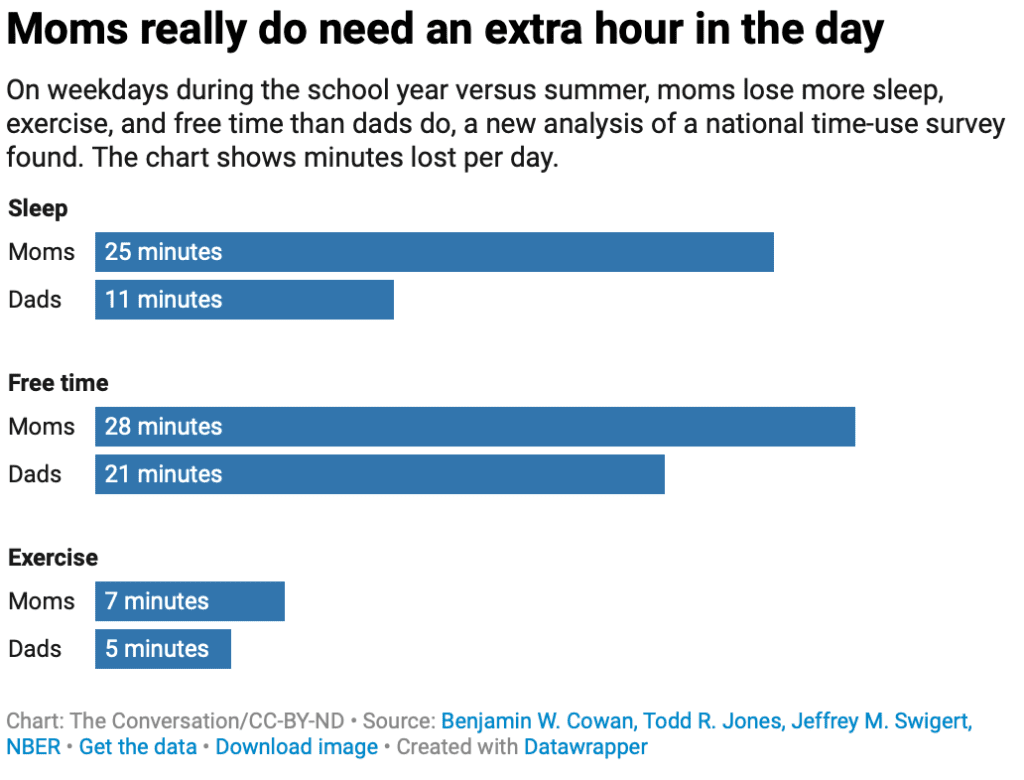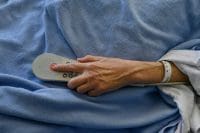Moms of school-age children get significantly less sleep during the school year than during the summer.
We are economists who specialize in education and health research. We combined extensive data on school district schedules with information derived from the American Time Use Survey to explore the ways families use their time differently depending on whether school is in session or out for summer.
We observed mothers on average tend to sleep 25 minutes less, have 28 minutes less free time and allocate seven minutes less for exercise on weekdays during the school year than during the summer. For comparison, fathers reduce sleep by 11 minutes during the school year relative to the summer, have 21 minutes less free time and five fewer exercise minutes.
Conversely, mothers spend about half an hour more per day during the school year taking care of others, including kids, and five additional minutes on travel – which often involves driving their kids to and from school.
Interestingly, even though both mothers and fathers spend more time physically present with children in their household during summer months, both spend more time actively engaged with the children – such as helping with homework or reading together – during the school year. However, the effect is almost three times greater for women than it is for men: Moms spend an extra 34 minutes per day during the school year actively engaged with the children versus an extra 12 minutes for dads.
Our study also observed teenagers ages 15-17, as they are the only children included in the time use survey.
During the school year, teenagers sleep about one hour and 20 minutes – or 13% – less than they do during the summer, and they have over two hours – or 33% – less free time each day. This reduction in free time includes nearly an hour and a half less time spent each day on television, games – including video games – and computer use.
Why it matters
Prior research has shown there is a gender gap in mental health, with women faring worse than men on measures such as anxiety and depression. Women are also four times as likely as men to be diagnosed with seasonal affective disorder, a type of depression that typically occurs in fall and winter.
Our results suggest the possibility that these issues are exacerbated by the greater demands placed on mothers during the school year.
Regarding teenagers getting more sleep, our findings support arguments for later school start times so that teens can get more sleep. The American Academy of Pediatrics has recommended middle and high schools start no earlier than 8:30 a.m. so that adolescents can get sufficient sleep to support mental health and academic achievement. However, the average start time for U.S. high schools is 8 a.m..
Our results also suggest that when school is out, teenagers may be especially susceptible to media overconsumption. Teens themselves say they spend too much time on screens.
What we still don’t know
We do not yet know how these changes in schedules affect teen mental health. While some measures of teen mental health improve during summer months, we found that teenagers spend the lion’s share of their extra summer free time in front of screens, and studies have linked excessive screen time to higher levels of depression and poorer mental health.
Todd Jones, Assistant Professor of Economics, Mississippi State University; Benjamin Cowan, Associate Professor of Economics, Washington State University, and Jeff Swigert, Assistant Professor of Economics, Southern Utah University
This article is republished from The Conversation under a Creative Commons license. Read the original article.


















